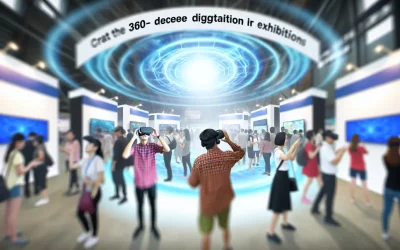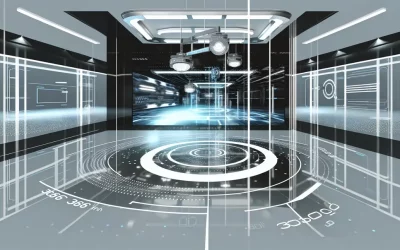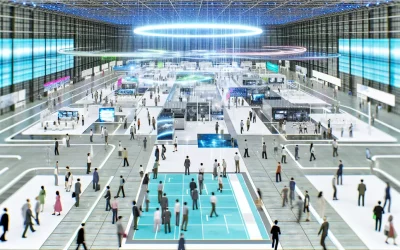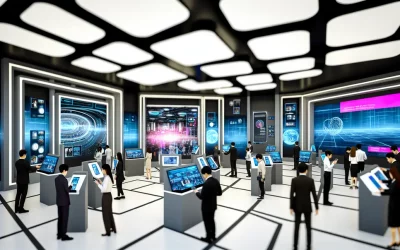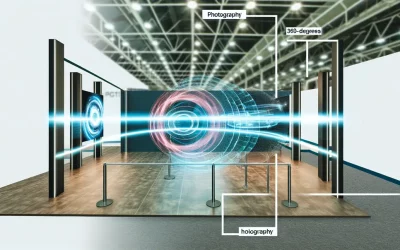Số hoá không gian 360, or 360-degree space digitization, is dramatically transforming how we perceive and interact with showrooms and exhibitions. By bringing immersive experiences to life, this technology goes beyond traditional 2D displays, offering an innovative solution to engage audiences globally. In the realm of showrooms and exhibitions, 360-degree digitization not only enhances viewer engagement but also provides unparalleled convenience and accessibility. This article delves into how this cutting-edge technology is reshaping the visual landscape of these sectors.
Enhancing Viewer Engagement with 360-Degree Immersion

360-degree digitization is revolutionizing the landscape of modern showrooms and exhibitions, offering unprecedented levels of viewer engagement. The immersive nature of this technology transforms the way audiences interact with displays, weaving an interactive web where curiosity and exploration are the main threads. With the ability to explore spaces remotely and interactively, stakeholders no longer need to rely on static photographs or fixed perspectives. Instead, they can enjoy a dynamic experience that closely mirrors the depth and breadth of physical exploration.
At the core of this immersion is the sense of presence it fosters. The use of 360-degree technology dissolves the boundaries of distance, allowing viewers to feel physically present within a space even from thousands of miles away. This feature is especially compelling for international audiences or those who are otherwise unable to visit in person. By integrating high-definition visual elements, it becomes possible to provide detailed and crisp imagery that truly captivates audiences, raising their engagement and retention levels.
Interactivity plays a pivotal role in enhancing viewer engagement. Unlike traditional formats, 360-degree digitization allows users to control their experience, choosing where to look and what to focus on at any given moment. This agency in exploring environments empowers users, leading to a more personalized and meaningful experience. Elements such as embedded multimedia and hotspot links further enrich this experience, transforming a passive viewing into an active exploration. Attendees can click on items for more information, watch associated videos, or even initiate a virtual chat—heightening the overall interactive narrative.
Accessibility is perhaps one of the most transformative advantages of 360-degree technology. By breaking down geographical barriers, it opens doors to wider audiences. Exhibitors can reach demographics that were previously inaccessible, expanding their outreach and potential impact. Moreover, these digital platforms are even more inclusive with support for various devices—from mobile phones and tablets to computers—ensuring that the technology is user-friendly and accessible for people with diverse technological capabilities.
Virtual tours are another captivating aspect that keeps audiences engaged for longer durations. By simulating the experience of walking through a showroom or exhibition hall, virtual tours can hold the viewer’s attention far more effectively than traditional media. The seamless integration of high-definition visuals with spatial audio elements makes it easier to capture and maintain audience interest. The consistent enhancement and refinement of graphic fidelity reflect a commitment to providing more compelling and engaging visual experiences. This feature ensures that viewers feel less like passive observers and more like active participants in a vibrant, interactive exhibition.
The dynamic nature of 360-degree showrooms and exhibitions also promotes innovative storytelling. Curators and marketers can weave narratives into their digital spaces by using virtual mannequins, digital processes, and layered storytelling techniques. This interactive storytelling transcends traditional media, creating experiences that are not only richer but also more memorable. For instance, integrating narrative elements into a virtual art exhibition enables a deeper connection to the audience by contextualizing and explaining the exhibits without detracting from their visual splendor.
Incorporating 360-degree technology into showrooms and exhibitions strategically enhances visitor engagement through each touchpoint—from the immersive visuals to the interactivity and accessibility it provides. To explore more about how 360-degree technologies are influencing the real estate industry, you can read about it here. The digital transformation continues to redefine how audiences connect with spaces, showcasing the future potential of these technologies in creating shared virtual environments that can replicate, or even surpass, the allure of traditional engagements.
Lời kết
The integration of số hoá không gian 360 within showrooms and exhibitions offers a dynamic, engaging, and accessible way to interact with visual content. By breaking down geographical barriers, it opens new avenues for global engagement and marketing. As this technology continues to evolve, it will undoubtedly become an indispensable tool for creating captivating and boundary-free visual experiences.
Đặt lịch tư vấn cùng đội ngũ thiết kế & triển khai dự án chuyên nghiệp
Learn more: https://starglobal3d.com/
Về chúng tôi
CÔNG TY CỔ PHẦN GIẢI PHÁP CHUYÊN GIA STAR GLOBAL (StarGlobal 3D) là doanh nghiệp Khoa học Công nghệ chuyên triển khai các giải pháp Số hoá 3D đã được Cơ quan sáng chế và thương hiệu Hoa Kỳ USPTO cấp bằng sáng chế độc quyền (Patent) với sản phẩm “Web/App tương tác thông minh 3D/360”, cho phép khách hàng tạo ra một bản sao của thế giới thực trong thế giới số dưới dạng web tương tác 3D/360, giúp người dùng khắp nơi trên thế giới có thể tham quan từ xa đến bất kỳ một địa điểm nào mà không bị rào cản về mặt không gian và thời gian.



